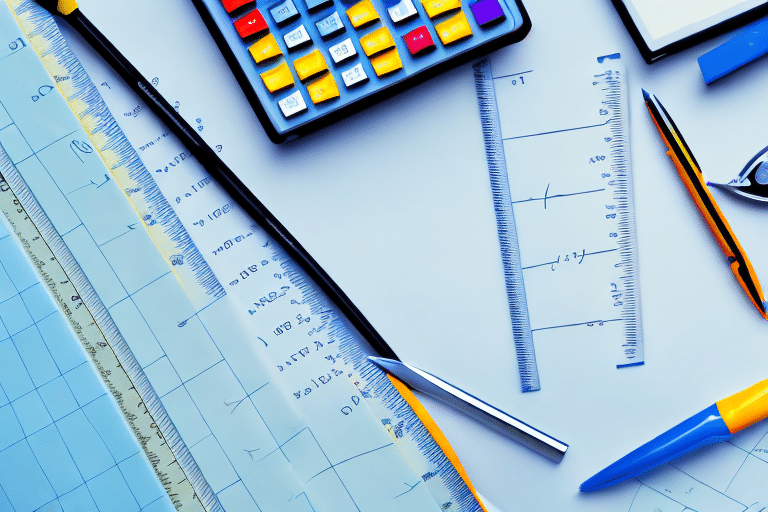How to Use a Dimensions Calculator for Precise Measurements
Accurate measurements are essential in various fields, including construction, engineering, and DIY projects. Professionals and hobbyists alike rely on dimensions calculators to achieve precision. This article delves into the advantages of using a dimensions calculator, explores different types available, provides a step-by-step guide on their usage, and offers tips to enhance measurement accuracy.
The Advantages of Using a Dimensions Calculator
Enhanced Accuracy and Precision
Dimensions calculators provide measurements with high precision, often down to the decimal point. This level of accuracy is crucial in fields such as engineering and construction, where even minor discrepancies can lead to significant issues. According to a National Institute of Standards and Technology (NIST) report, precise measurements are foundational to quality control and structural integrity.
Time Efficiency
Using a dimensions calculator significantly reduces the time required to perform complex calculations. Tasks that might take hours manually can be completed in minutes, allowing professionals to focus on other critical aspects of their projects.
Error Reduction
Manual calculations are prone to human error, which can lead to costly mistakes. Dimensions calculators automate the computational process, minimizing the risk of errors and ensuring reliable results.
Consistency in Measurements
When multiple individuals are involved in a project, maintaining consistency in measurements is vital. Dimensions calculators provide a standardized method of calculation, ensuring that all team members are aligned and reducing discrepancies.
The Importance of Accurate Measurements in Construction and DIY Projects
Preventing Material Waste and Cost Overruns
Accurate measurements ensure that materials are purchased in the correct quantities, preventing waste and avoiding unexpected expenses. For instance, miscalculating the amount of lumber needed for a construction project can lead to either insufficient materials or excess, both of which are costly.
Ensuring Structural Integrity and Safety
In construction, precise measurements are critical for the safety and durability of structures. Incorrect measurements can compromise the stability of buildings, leading to potential safety hazards. Adhering to accurate measurements also ensures compliance with building codes and regulations, as outlined by authorities like the Occupational Safety and Health Administration (OSHA).
Achieving Aesthetic Precision
In DIY projects and interior design, accurate measurements contribute to the overall aesthetic appeal. Ensuring that components fit seamlessly enhances the visual quality of the finished product, providing a professional and polished look.
Types of Dimensions Calculators and Selection Criteria
Basic Handheld Calculators
Simple dimensions calculators are suitable for straightforward measurements and basic conversions. They are user-friendly and ideal for tasks that do not require complex computations.
Advanced Digital Calculators
These calculators offer functionalities such as area, volume, and angle measurements. They are ideal for professionals who need to perform a wide range of calculations quickly and accurately.
Laser Distance Meters
Laser distance meters utilize laser technology to measure distances with high precision. They are particularly useful for measuring large or hard-to-reach areas. According to FDA guidelines, laser distance meters offer enhanced accuracy for detailed measurements.
Mobile App Calculators
With the proliferation of smartphones, dimensions calculator apps have become popular. These apps provide convenient on-the-go measurement capabilities, though their accuracy can vary based on the device and app quality. It's essential to choose reputable apps and verify their accuracy regularly.
Selection Criteria
- Accuracy: Ensure the calculator provides precise measurements suitable for your needs.
- Functionality: Choose a calculator that offers the necessary features, such as unit conversion and complex calculations.
- Ease of Use: The calculator should have an intuitive interface for efficient operation.
- Durability: Especially for handheld and laser calculators, build quality is important for longevity.
- Battery Life: Long-lasting batteries minimize interruptions during critical measurements.
Step-by-Step Guide to Using a Dimensions Calculator
1. Power On the Calculator
Turn on your dimensions calculator using the power button. Ensure it has sufficient battery life for uninterrupted use.
2. Select the Unit of Measurement
Choose the appropriate unit of measurement (e.g., inches, feet, meters, centimeters) based on your project requirements.
3. Input the Necessary Dimensions
Enter the length, width, height, or other required dimensions into the calculator. For complex shapes, input multiple measurements as needed.
4. Choose the Desired Calculation
Select the specific calculation you need, such as area, volume, or conversion between units.
5. Review and Record the Results
Once the calculation is complete, review the results for accuracy. Use the memory function, if available, to store important measurements for future reference.
6. Calibrate if Necessary
For optimal accuracy, especially with advanced calculators, periodically calibrate your device according to the manufacturer's instructions.
Tips for Enhancing Measurement Accuracy
- Choose the Right Calculator: Select a calculator that matches the complexity and precision required for your project.
- Regular Calibration: Calibrate your calculator regularly to maintain accuracy over time.
- Stable Environment: Perform measurements in a stable environment, avoiding extreme temperatures and humidity that can affect results.
- Consistent Technique: Use a consistent method when taking measurements to reduce variability.
- Double-Check Measurements: Verify critical measurements by repeating the calculation or using an alternative method.
Avoiding Common Measurement Errors
Incorrect Unit Selection
Always ensure that the correct unit of measurement is selected to avoid discrepancies in your results.
Neglecting Calibration
Failure to calibrate your calculator can lead to inaccurate measurements. Regular calibration is essential for maintaining precision.
Environmental Factors
Temperature, humidity, and air pressure can impact measurement accuracy. Measure in environments with stable conditions to minimize these effects.
Rounding Errors
Avoid unnecessary rounding of measurements. Retain as many decimal places as needed for your project to maintain accuracy.
Maintaining Your Dimensions Calculator
Regular Cleaning
Keep your calculator clean and free from dust and debris to ensure smooth operation. Use a soft, dry cloth for cleaning.
Battery Care
Replace batteries promptly when they start to drain. For rechargeable models, follow the manufacturer's guidelines for charging to extend battery life.
Protective Storage
Store your calculator in a protective case when not in use to prevent damage from drops or exposure to harsh conditions.
Periodic Calibration
Calibrate your calculator periodically, especially after extended periods of use or exposure to extreme conditions, to ensure continued accuracy.
Conclusion
Dimensions calculators are invaluable tools that enhance accuracy, efficiency, and consistency in measurements across various projects. By selecting the appropriate calculator, adhering to best practices, and maintaining your device, you can ensure reliable and precise measurements every time. Whether you're engaged in construction, engineering, or DIY endeavors, a dimensions calculator is essential for achieving professional and accurate results.






















